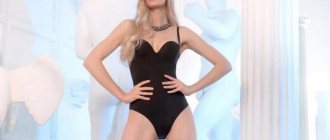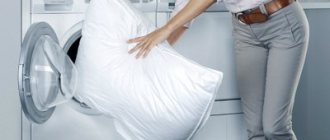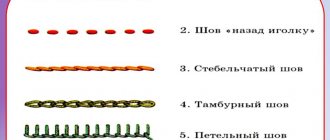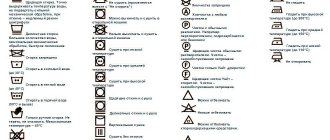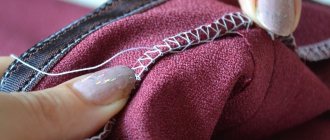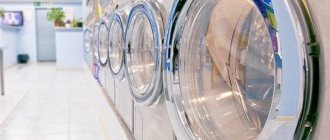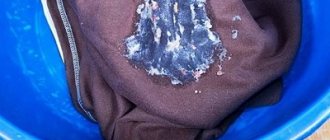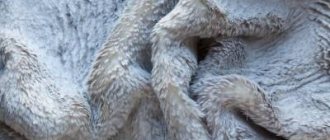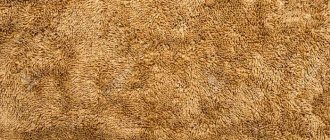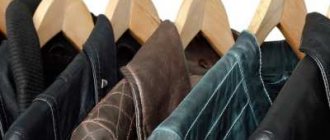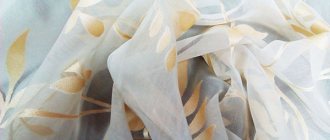Question 1. What is it?
A cover machine is a type of sewing equipment that performs flat seams that cannot be performed on other types of sewing machines. Its stitches are used when sewing clothes from highly stretchable fabrics, knitwear, stretch and knitted materials. Such a machine does not have a bottom threading and the stitching on a flat-stitch machine is formed by creating a chain stitch, which has the properties of stretching when the fabric is stretched and does not tear.
When sewing, a flat-stitch machine uses two or more threads, so the number of lines it can sew can reach up to twenty. These stitches can be both practical in nature - connecting parts, performing a professional hem at the bottom, sewing on details, and finishing - being a decoration of the item, its highlight.
Also, when working on a flat stitch machine, up to three needles are used, which can be combined, adjusting the width of the seam, thereby creating different types of flat seams.
Technical characteristics of cover stitching machines
The characteristics of any machine, even of the same type, vary greatly. A few pages would not be enough to list all existing models, so as an example, you can look at two copies:
- Typical GK31030. Has 3 needles and 5 threads. There is also one looper. Foot lift height – 0.6 cm (maximum). Speed – 4000 operations (stitches) per minute. The basic package can be supplemented with other parts and components (needle bar, additional thread handler, etc.).
Typical GK31030
- Juki MF-7723-U10-B48. The model is a little more expensive than the previous one. This is a high speed top and bottom covered flatlock stitching machine that can sew butt and overlap knits. Also has 3 needles and 5 threads. Sewing speed – 6500 stitches per minute. Lubrication type: automatic.
You may be interested in this: The correct order of sewing shoulder straps on a tunic
Juki MF-7723-U10-B48
Question 2. What is a cover stitching machine for?
The name of this machine does not make it clear to the average sewing enthusiast what its intended purpose is; does it perform some unknown cover-stitching operations? And in sewing slang it’s called a flat stitch, and here a novice needlewoman can be left scratching her head, what kind of flat stitches does she make and where are they used? The answers to these questions will not be given to you in a household appliance store; the sellers there will most likely confuse you even more. To know about its purpose, it is best to contact an experienced seamstress. And since I have such an assistant at home, these questions have not puzzled me for a long time)
Firstly, a cover-stitching machine is indispensable when sewing knitwear. Its stitches are used when sewing T-shirts, T-shirts, underwear, sweatshirts, sweatshirts, long sleeves, dresses, clothes made from stretch and stretchable fabrics. If you intend to sew at least one of the listed things on a regular basis, then you definitely cannot do without a flat-seam stitch in your work.
Secondly, why knitted items cannot be sewn on a regular sewing machine. Because only a stitcher can make a knitted or, in other words, elastic seam, which stretches along with the fabric when it is pulled, without being deformed. Moreover, they may not unravel if one of the threads breaks; this is facilitated by the complex interweaving of the threads when forming the lines.
Thirdly, in addition to elastic stitches, the cover stitch can be used when sewing on lace, ribbons, and adjusting elastic.
Question 3. Do I need a cover stitcher if I have an overlocker?
If we talk briefly about the main purpose of an overlocker, it is high-quality and professional processing of cuts. Can an overlocker replace a cover stitching machine? If you have already purchased an overlocker, you can look at the instructions for it to become familiar with its functionality. Today, some models of overlockers perform flat seams and can partially replace cover stitching machines. Why partially? Because an overlocker is still an overcasting machine, even if you look at the overlocker from the side, you can immediately notice its visual difference from a cover-stitching machine - this is the length of the sleeve.
If there is practically no space left in the overlocker on the inside of the presser foot, the cover-stitching machine, due to the unreduced overhang of the sleeve, is able to connect the parts.
Do you need a cover stitch when you have an overlocker?
An overlocker is designed for high-quality processing of fabric cuts. When a person buys a serger, he often wonders whether it can perform a flat seam. Modern models of overlock machines are quite capable of creating this kind of stitches. It is necessary to carefully study the instructions for use and be interested in the characteristics of the equipment before purchasing it.
Important! An overlocker cannot completely replace the stitcher, since its main potential is aimed at overcasting the edges of the fabric. The sleeve of the overlocker is too small, while the sleeve of the stitcher allows you to connect individual parts of the pattern.
Gemsy GEM 1500B
Question 4. What operations does a cover stitch machine perform?
In order to clearly understand which stitches the cover sewing machine makes, you can take any T-shirt and see which stitches it is sewn with.
1. The most common seam used when sewing knitwear, made with a flat-stitch machine, is a connecting one. It is used to sew down the necks of T-shirts, you can find it when connecting a sleeve to a bodice, or when finishing sportswear.
2. Wide and narrow flat seam, Flatlock. Typically, such stitches are indispensable when hemming the bottom of knitwear, as well as when sewing on a belt, especially an elastic one with an internal elastic band.
3. The possibilities of a flat-stitch machine don’t end there; you can change the positions and number of needles, as well as thread threads of different colors to get beautiful flat seams, used in sewing not only as connecting stitches, but also as finishing stitches.
Question 5. Do I need special threads to use a cover stitching machine?
In order to get a high-quality and well-stretchable seam that will not tear, you first need to take care of the quality of the threads used in sewing. From my own experience, I can say that machines such as an overlocker, a coverlocker or a cover stitching machine are quite capricious and are sensitive to the types of threads threaded into them. Therefore, if you intend to sew something from elastic fabric, immediately purchase a set of threads of three or four pieces of the same density and preferably from the same manufacturer.
How much do cover stitch machines cost?
The price range for machines of this type can be quite significant. The cost of a cover sewing machine depends not only on its functionality, but also on many other factors. First of all, the price is affected by the quality of the equipment. The cheapest cars are produced by unknown companies with a dubious reputation. Fragile plastic, poorly fitting parts, constantly changing settings - everything that can be purchased in pursuit of savings.
A good cover stitching machine from a trusted manufacturer is quite expensive and during operation it fully justifies the money invested in its purchase. Prices for quality cars start from 30 thousand rubles and end in six figures.
Question 6. What you need to know about the cover machine for successful sewing
1. In order for the stitches to be of high quality and the threads not to break, you will first need to understand the thread tension regulators, which are located on the front of the machine. Each type of seam will have its own settings, and they will not necessarily coincide with those recommended in the instructions. You will have to first make stitches on a fabric sample, achieve a high-quality seam, and only then move on to the product itself.
2. Also on the cover sewing machine, in addition to the thread tension regulators, there are other settings, namely:
- Presser foot pressure regulator on fabric; it is used when working with fabrics of different thicknesses and densities. This setting can also be used to obtain wavy stitches.
- stitch length regulator.
3. To work with a cover stitch machine, you do not need special needles; you can use the same needles that you use on your sewing machine. But at the same time, you need to make sure that there are no burrs on the needles, that they are sharp, this is especially true when you often sew on tailor’s pins. You need to change them in time, otherwise you won’t understand what the problem is when your flat-seam suddenly stops making a stitch, and the problem will be a dull needle)
What is the difference between overlock and coverlock
Today, manufacturers of sewing equipment present a wide range of sewing products: overlockers, coverlockers, flat-stitch machines. At first glance, such devices are very similar , but the evidence of a significant difference is their different functional content, which explains the differences in price.
The advantage of a cover stitching machine compared to an overlocker and a coverlocker is:
- formation of an even and neat seam;
- reliability, strength, quality of cut processing;
- the ability to form different seam options;
- ability to work with polyester and textured threads;
- the seam does not unravel, even if one of the threads is damaged;
- the seam stretches simultaneously with the stretching of the fabric of the product.
All types of sewing equipment for overcasting edges are equipped with a special part - a looper, but their number differs for each type. It is the looper that is responsible for forming the chain stitch.
This technique does not have a sewing hook, the presence of which is a prerequisite in a traditional sewing machine. An overlock is an overcasting machine with the principle of forming a chain stitch. Even though the technique can cut the cut, it still needs to be prepared first. Otherwise, if there is an excess amount of fabric, the overlocker will be unable to make a high-quality stitching of the product and may fail. Unlike an overlock machine, a flat-stitch machine does not trim the fabric, and the cut processed with its help looks more neat. When working with an overlocker, the stitch is always formed along the edge, and a flat-stitch machine allows you to tuck the fabric to the required distance.
Coverlockers are a more multifunctional technique compared to an overlocker and a flat-stitch machine. This technique can perform both the function of an overlocker and the function of a flat-stitch machine. The disadvantage of this type of overcasting device is its high cost and the need for additional time to reconfigure operating modes.
Question 7. With what set of functions is it better to choose a cover maker?
The quality of work depends on how many more functions your machine will perform, so it is important to pay close attention to this stage. But you also shouldn’t buy a cover maker with an excessive set of functions that can increase its cost and be absolutely useless in operation. A flat-stitch machine must contain:
- removable sleeve platform;
- speed not lower than – 1000 stitches/min.;
- if the machine has a thread tension control system in the looper, you will not have to adjust the settings yourself each time;
- the number of needles is at least 3, then you can make a larger number of seams;
- automatic needle threading means that the machine itself will rethread the threads for you and pass them through numerous loopers on its own, which of course saves time and sometimes nerves for a novice seamstress. I’ll tell you from experience, for me, threading needles is my least favorite sewing operation)
- the number of sewing operations is from 4 or more. The most expensive models of cover stitching machines can perform up to 20 types of seams.
Best top cover stitching machine
A beautiful decorative seam is often found on knitwear, which is called a “flat seam with a top cover.” It is performed on flat-seam stitches with a top cover.
Brother CoverStitch 2340CV
Performs several types of hemming stitches. Elastic - functional - when layers of fabric are adjusted to each other, and decorative, where you can use several multi-colored threads.
Flat seams are made with 3 or 2 needles, and are 3 or 2, respectively, parallel lines on the front side of the product, the back of the seam is in the form of combined triangular ones.
Brother CoverStitch 2340CV
Single-needle or “chain”, sometimes “chain” on the front side of the product looks like a regular straight stitch, on the back the loops come out of each other. This is the most elastic type, in which even a very stretchy product will not tear at the seam.
There is a differential conveyor - two groups of runners (dogs) for uniform feeding of fabric during sewing. By changing its adjustment, you can sew materials of varying degrees of stretch or perform decorative finishing.
There is also an adjusting bolt for the pressure of the presser foot on the fabric; using this regulator, you can work with very thin and very thick types. The factory adjustment (10 mm from the machine body to the top point of the bolt) is set to an average value and is considered universal.
The downside is that there is no automatic threading, no cutting knife, and no additional presser feet.
Brother CoverStitch 2340CV Operating Instructions
Brother CV3550
A new line of flat-stitch (covering) machines, where seams are made with 5, 4, 3 and 2 threads with the corresponding number of parallel lines. Working area 15.5 cm, automatic thread tension release, adjustable presser foot pressure, free sleeve for children's clothing, transparent foot gives an excellent overview of the working area, allowing you to direct the stitching in the desired direction.
Brother CV3550
Pros - a device for hemming edges, a new and improved device for attaching bias tape for a high-quality hem, the ability to sew bias tape, making belt loops, etc.
The kit includes:
- upper thread guide;
- hex head wrench;
- accessory box;
- case;
- set of needles of 3 pcs.;
- tweezers;
- spool lining;
- cleaning brush.
Brother CV3550 User Manual
Elna 444
Three-needle cover stitching machine with an increased working surface to the right of the needles D143 x H100 mm and LED lighting of the working area. There is a thread tension control system in the looper (TLC), which allows you to work with fabrics of different densities and thicknesses. Removable sleeve platform for tight spots in products and children's clothing. A color-coded threading pattern is printed on the inside panel of the machine.
Elna 444
You can choose any of 7 types of seams:
- 3-needle cover stitcher
- 2-needle narrow (left needle)
- 2-needle narrow (right needle)
- 2-needle wide
- chain (left needle)
- chain (central)
- chain (right)
The maximum sewing speed is 1000 sti/min, which is rated very highly in the line of this manufacturer. The stitch length can be adjusted up to 4 mm, the width up to 6 mm.
The package includes:
- 4 reel seats;
- 2 screwdrivers;
- tweezers;
- needle threader;
- 4 limiters
- grids;
- brush;
- set of games;
- mounting screws;
- storage box.
Operating manual Elna 444
There are many good reviews about the Janome Cover Pro 1000CP (Cover Pro 2) machine worth 20,990 rubles, but there are nuances. Firstly, you need to use needles marked EL in order to sew beautifully, neatly, without skipping, and secondly, some seamstresses do not have enough bottom covering. There are also complaints about the storage box. Plus - it sews with any thread, both textured and regular.
In the same price category as Janome CoverPro Merrylock 009 costing 16,000 rubles. – performs 3-needle, 2-needle wide, 2-needle narrow flat stitches, as well as 2-thread chain stitch.
Question 8. What is the difference between a household cover stitch machine and an industrial one?
In a sewing store they can show you such a unit as an industrial sewing machine, how does it differ from a household one? Firstly, you can visually notice that it is not sold separately, but comes complete with the table. Moreover, it is firmly built into it, this is done in order to eliminate unnecessary vibration, because its operating speed is tens of times higher than that of its everyday counterpart. Secondly, to operate an industrial machine, you need a powerful engine, a motor and an electric drive with two pedals, the first of which raises the presser foot, the second starts the sewing mechanism.
Of course, such an industrial machine can sew much larger volumes of clothing and perform a larger number of seams, since it uses up to 8 needles. But if you are not going to launch mass production of knitted clothing, a household flat-seam stitcher will be enough for you.
Question 9. Price for a flat-stitch machine?
If you decide that you cannot do without a cover machine when sewing, the question immediately arises - how much will it cost to purchase this equipment. In fact, a cover sewing machine is a budget sewing equipment; prices for it start from 15 thousand rubles, that is, it will cost you the same amount as a household overlocker. And if you already have an overcasting machine at home, then a flat-stitch machine will be a good addition to an overlocker. You won't have to take a carpetlocker, and you won't have problems rethreading or rearranging needles.
⇡#Manufacturer
Here, as in any other field, there are market leaders and little-known companies.
The most famous are Minerva, Bernina, Janome, Pfaff, Brother, Singer, Husqvarna. The choice among leading manufacturers is largely determined by personal preferences, the availability in the store of a selection of the machines themselves and additional accessories for them. You should also take into account the availability of service centers in your place of residence - with a high mileage of the machine, this factor begins to play a significant role.
With less well-known companies, everything is not so clear. Often, with the same set of functions, a machine from an unknown company costs significantly less. But, in addition to the obvious risk of getting worse quality, here you may stumble upon another pitfall: difficulties in purchasing additional legs and components. Little-known companies often have very exotic foot mounts or bobbin sizes. Therefore, if you still decide to save money, be sure to find out which accessories are suitable for this model, and whether you will have the opportunity to purchase them without unnecessary hassle and overpayments.
Question 10. Where can I buy a cover stitching machine?
Now that you know what functions of a cover stitching machine you need for your work, you can start choosing a model from the manufacturer. Today this can be done in three well-known ways.
1. Internet . Honestly, this is my favorite shopping option, what's so good about it? There is no hustle and bustle of buyers here, I can calmly go to a website that sells sewing equipment and leisurely make a choice. And if I doubt a purchase, I can read customer reviews. Also online you can always compare prices from different online stores and choose the best price.
2. Offline . When I have already made a choice and I want to touch the machine and make test stitches on it, I simply go to a sewing store to test the stitcher in action. The downside here is that you have to spend time, so it’s worth asking the store if they offer a trial period when buying a sewing machine online.
3. Websites for used equipment . Here I mean such as Avito, From Hand to Hand and so on. Sometimes in the vastness of these flea markets you can find really worthwhile equipment at a low price. But in order not to buy a pig in a poke, if you have no experience in sewing, it is best to take with you to the transaction a person who knows a little about sewing equipment.
Are there any recommendations for choosing cover stitching machines?
Universal cover stitching machines are also suitable for ateliers if they have a small volume. If the studio has a large volume, they buy an industrial machine; if the volume of products is small, then they buy both the studio and household versions for the home. That is, in practice, there are the same models for commercial and household use.
What should you pay attention to when choosing a cover stitching machine?
Reliability is important first and foremost. You need to consult with the manager when purchasing: which models are more reliable and which ones make better stitching. I have already named my favorite model from the embroidery bag.
Sewing life hack for those who don’t yet have a sewing machine
If you need to make a stitch on knitwear, for example, in order to hem the bottom of a T-shirt or sleeve, you don’t have to go to the studio for this service.
An imitation of a flat seam with two lines can be done on a regular sewing machine that has a zigzag function; for this you will need a double (double-rod) needle. The difference in sewing this way is that two threads will be threaded on top, and when sewing, the machine will make two parallel lines on the front side, and one zigzag on the back.
What is the difference between an overlocker and a cover stitching machine?
At first glance, both cars are very similar. Visually, the cover differs only in the protrusion of the sleeves. This was done for convenient placement of the product when connected by thread. The overlocker has virtually no sleeve extension.
The main difference is that a serger can only work on the edge of the fabric, while a cover stitch machine stitches anywhere.
Comparison table:
| Coverstitching machine | Overlock | |
| Purpose | Working with stretch fabrics and knitwear | Processing the edge of the product |
| Functions | Stitching, hemming | Trimming and overcasting |
| The seam | Flat | Volumetric, overcast |
| Number of needles | 2-3 or more | 1-2 |
| Sleeve extension | Yes | No |
| Stitching | Yes | No |
| Trimming | No | Yes |
| Overcasting | No | Yes |
